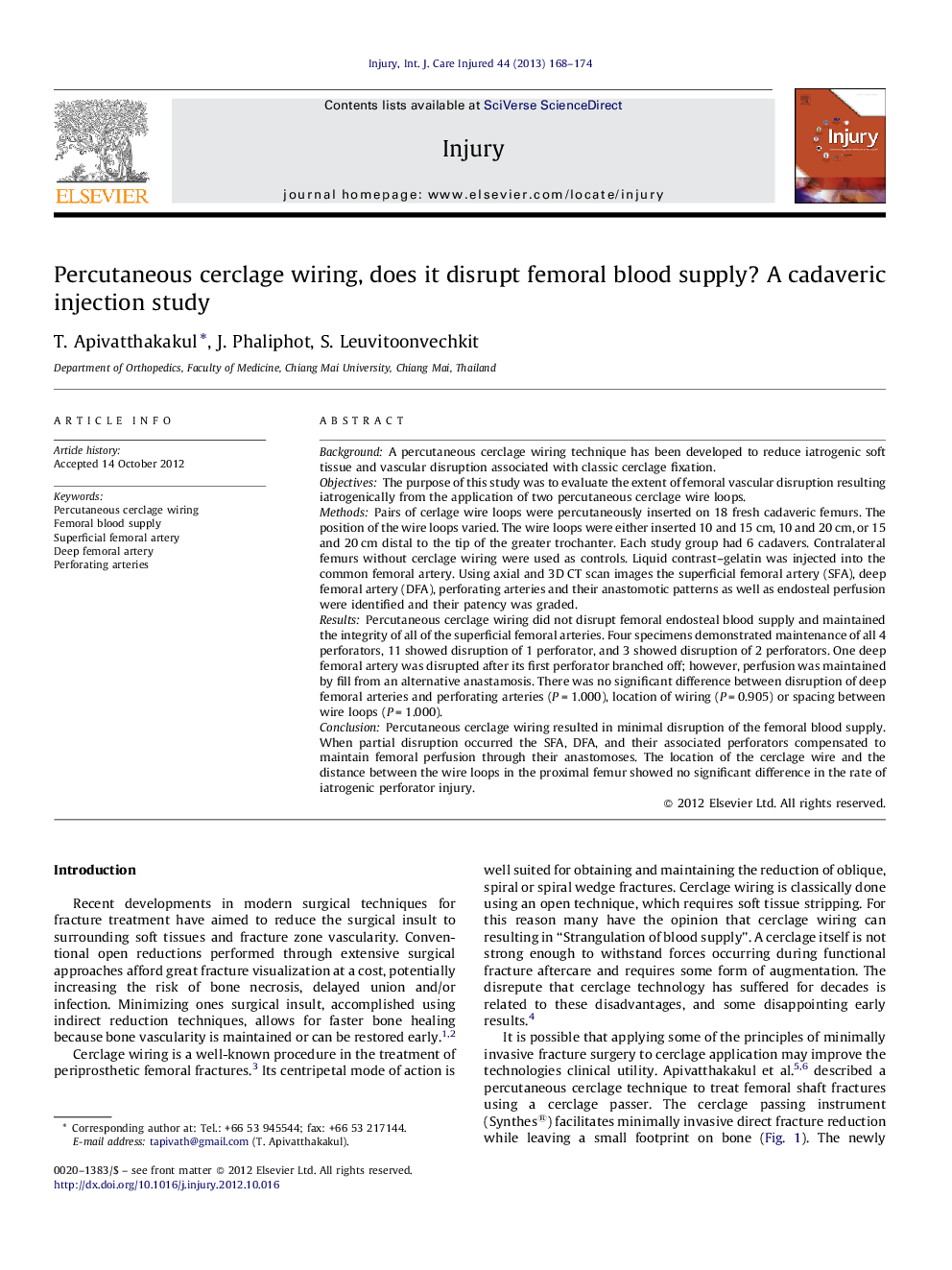| کد مقاله | کد نشریه | سال انتشار | مقاله انگلیسی | نسخه تمام متن |
|---|---|---|---|---|
| 3240238 | 1206037 | 2013 | 7 صفحه PDF | دانلود رایگان |

BackgroundA percutaneous cerclage wiring technique has been developed to reduce iatrogenic soft tissue and vascular disruption associated with classic cerclage fixation.ObjectivesThe purpose of this study was to evaluate the extent of femoral vascular disruption resulting iatrogenically from the application of two percutaneous cerclage wire loops.MethodsPairs of cerlage wire loops were percutaneously inserted on 18 fresh cadaveric femurs. The position of the wire loops varied. The wire loops were either inserted 10 and 15 cm, 10 and 20 cm, or 15 and 20 cm distal to the tip of the greater trochanter. Each study group had 6 cadavers. Contralateral femurs without cerclage wiring were used as controls. Liquid contrast–gelatin was injected into the common femoral artery. Using axial and 3D CT scan images the superficial femoral artery (SFA), deep femoral artery (DFA), perforating arteries and their anastomotic patterns as well as endosteal perfusion were identified and their patency was graded.ResultsPercutaneous cerclage wiring did not disrupt femoral endosteal blood supply and maintained the integrity of all of the superficial femoral arteries. Four specimens demonstrated maintenance of all 4 perforators, 11 showed disruption of 1 perforator, and 3 showed disruption of 2 perforators. One deep femoral artery was disrupted after its first perforator branched off; however, perfusion was maintained by fill from an alternative anastamosis. There was no significant difference between disruption of deep femoral arteries and perforating arteries (P = 1.000), location of wiring (P = 0.905) or spacing between wire loops (P = 1.000).ConclusionPercutaneous cerclage wiring resulted in minimal disruption of the femoral blood supply. When partial disruption occurred the SFA, DFA, and their associated perforators compensated to maintain femoral perfusion through their anastomoses. The location of the cerclage wire and the distance between the wire loops in the proximal femur showed no significant difference in the rate of iatrogenic perforator injury.
Journal: Injury - Volume 44, Issue 2, February 2013, Pages 168–174